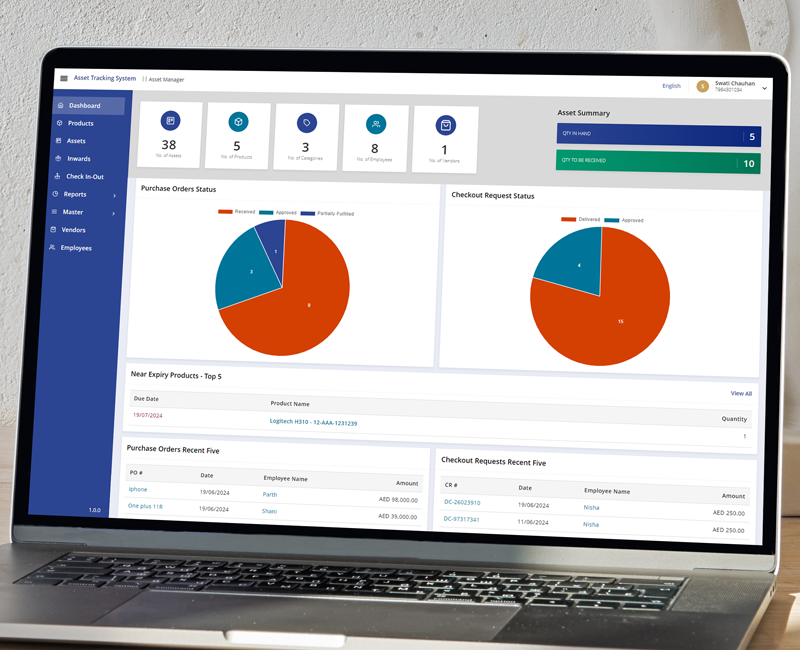
Front-end frameworks and tools are quickly taking over as a crucial component of the current web development stack. The JavaScript community’s preferred framework for contemporary web programming is React.js, a front-end library.
React JS is used by many big businesses today, including Netflix and Instagram, to name a couple. This framework has many advantages over alternative frameworks, and it has consistently ranked among the top 10 programming languages according to different language ranking statistics over the past few years.
Let’s look at React from a reactjs development company, how it functions, and how it differs from other JavaScript frameworks for people who are newcomers to web development or are attempting to understand what the recent uproar is about.
Let’s get started!
What is Reactjs?
React JS is a JavaScript library created by Facebook that is used in web development to create interactive components on websites. Every React web program is made up of reusable components that make up the user interface. You can have a separate component for the sidebar, one for the footer of the page, one for the primary content, and so forth.
These elements are separate components of a finished interface that, when put together, form the complete user interface of the application.
Getting these reusable elements makes programming simpler since you don’t have to compose recurrent code. To use a component, all you have to do is build its logic and import it into the appropriate place in the code.
Have a look at some of the out-of-the-box features of Reactjs!

VirtualDOM
Virtual DOM is React’s name for the memory-based, lightweight representation of the actual DOM. The complete process becomes quicker with the aid of Virtual DOM, especially when considering other front-end technologies that must refresh every object, even if only one object in the web application transforms.
One-day data binding
This means that React employs a one-way data flow, prohibiting devs from directly editing elements and requiring them to utilize the callback capability.
The Flux component of the JS app architecture allows data flow to be controlled from a singular location. It actually increases the app’s flexibility and effectiveness when you hire react js developers while you give greater control over it.
Component-based Architecture
It essentially means that a React JS-dependent app’s UI is compiled up of a number of elements, each of which has its own unique logic created using JS.
As a consequence, writers can transmit the data throughout the application without affecting the DOM. React JS components are crucial in determining how the app looks and functions.
State management
State management is the process of controlling the states of a React program. When data is changed, the re-rendering procedure is triggered, and data is stored in external state management libraries. A state management library enables interaction and exchange of data between React elements.
Reactjs components
Applications built with ReactJS are frequently multi-component applications. Each ReactJS application element is reusable and in charge of producing a small, reused chunk of HTML code. Being the center of all React apps, each of its elements may also be nested. It is possible to construct complex applications out of straightforward building blocks thanks to this layering with additional elements.
JSX (JavaScript Syntax Extension)
JavaScript XML is referred to as JSX. It is an addition to the JavaScript syntax. It is a format used by ReactJS that resembles XML or HTML. This syntax is converted into instructions for the React Framework in JavaScript. It expands ES6 to allow JavaScript react code and text that looks like HTML to coexist. It is not required to use JSX, but it is suggested to use ReactJS for faster performance and a more user-friendly end result.
Unidirectional data flow:

ReactJS uses a unidirectional data flow to manage the state of an application. This means that data flows in one direction, from the parent component down to its children. When a change is made to the state of a component, ReactJS updates the virtual DOM and re-renders the component and its children. This approach makes it easier to manage the state of an application, as changes to the state are predictable and can be easily tracked.
Server-side rendering:
ReactJS can be used for server-side rendering, which allows the initial page load to be faster and more SEO-friendly. When a user requests a page, the server generates an HTML file that includes the ReactJS components. This approach allows the user to see the content of the page more quickly, as the components are already rendered on the server. It also makes the page more SEO-friendly, as search engines can easily crawl the content of the page.
Why do companies opt for Reactjs technology?

Reactjs development technology has gained immense popularity in recent years and has become the go-to front-end development technology for many companies.
One of the primary reasons why companies are adopting ReactJS is its ease of use. Its component-based architecture allows developers to create reusable and maintainable code, which can save time and effort when building complex applications.
Reactjs development company can use this framework with a wide range of other technologies, such as Redux for state management, GraphQL for APIs, and React Native for mobile app development. This makes it easier for Reactjs developers to build complex applications and integrate React into their existing technology stacks.
ReactJS technology also has a large and active community of developers, which means there are many resources available, such as tutorials, documentation, and open-source libraries. Many large companies, such as Facebook, Airbnb, Netflix, and Dropbox, are using ReactJS for their web development needs.
Check out a few instances when you should consider opting for Reactjs!
SPA development:
React is well-suited for building single-page applications that require fast, seamless transitions between different sections of the application. React’s virtual DOM and component-based architecture make it easy to build highly responsive and dynamic single-page applications.
Large-scale applications:
React is well-suited for building large-scale applications due to its modular design. The ability to split your application into smaller components helps with code organization and maintenance. This makes it easier to scale your application as your needs grow.
Developing complicated UI:
React is an excellent choice for building complex user interfaces that require a lot of interactivity and real-time updates. Its component-based architecture makes it easy to break down complex UI elements into smaller, reusable pieces. This makes it easier to maintain and update your codebase over time.
Mobile app development:
React Native, a mobile development framework built on top of React, allows you to build native mobile apps for iOS and Android using JavaScript. This means you can use your existing React skills to build mobile apps with a single codebase.
Performance-driven solutions:
React’s virtual DOM allows for efficient rendering and re-rendering of components, which can lead to a faster and more responsive user interface. This makes it an excellent choice for building high-performance applications that require fast updates and a smooth user experience.
Is the Future of Reactjs Bright?

ReactJS technology is a popular library that has seen tremendous growth and adoption since its release in 2013. It has become the go-to library for building user interfaces and has a large and active community of react js developers.
The future of ReactJS looks bright.
With continued improvements in performance, accessibility, and mobile development, ReactJS is likely to remain a key player in the web development landscape for years to come.
However, to get the best results – you need to hire a leading react js development company.
Better results:
One area where ReactJS is likely to continue to evolve is its performance. While ReactJS is already highly performant, there is always room for improvement. The React team is likely to continue to work on optimizing the library to make it even faster and more efficient.
Seamless Integration:
ReactJS is already highly flexible and can be used with a wide range of other technologies. However, we can expect to see even greater integration with other technologies in the future as react js developers look for more seamless ways to build complex applications.
Higher availability:
Accessibility is an important consideration for any web application, and ReactJS is no exception. As the importance of accessibility continues to grow, we can expect to see the React team place a greater emphasis on making it easier to build accessible user interfaces with React.
Mobile-friendly tech:
React Native, the mobile development framework built on top of React, has already seen significant growth and adoption. As the demand for mobile apps continues to grow, we can expect to see React Native become an even more important part of the React ecosystem.
Uniform Growth:
ReactJS technology has continued to see growth and adoption over the years, and this trend is likely to continue in the future of reactjs. With the rise of single-page applications and the demand for highly responsive and interactive user interfaces, ReactJS is well-positioned to remain a popular choice when you hire react js developers.
Conclusion
When opposed to other libraries and frameworks used by developers, React has continued to expand significantly and shows no signs of slowing down. React is on every contemporary web developer’s roadmap.
React has continued to be the preferred tool for creating the front end of decentralized applications despite the current uptake of web3 technology by a growing number of developers.
With React, you can create a wide range of applications, from straightforward web apps for to-do lists to markets, dashboards, and other things.
Numerous technologies, including Firebase, Bootstrap, Redux, and many more, can be easily integrated with React. We can create full-stack applications and single-page web apps that function at breakneck speed by combining React with Node.js and other server programming languages.
If you are looking forward to learning more about this technology or want to leverage this stunning tech with this user-friendly technology, you can reach out to Sufalam Technologies. Our team of developers from react js development company will understand your requirements and develop personalized solutions for your business.













